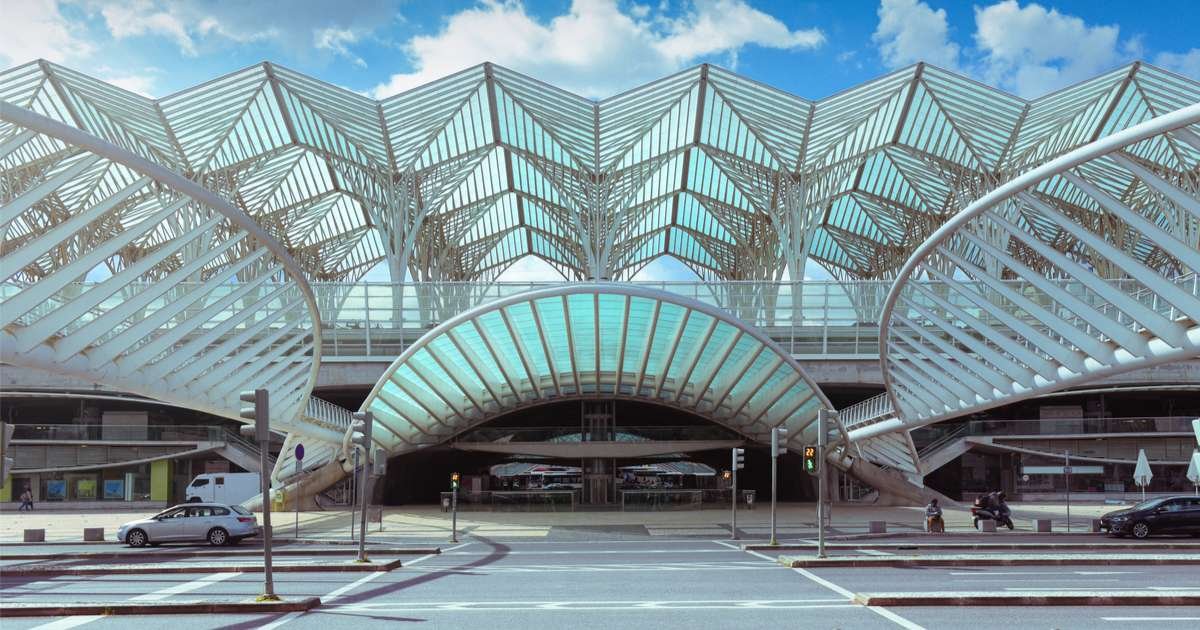Lisbon has several train stations, the most important for tourists being Rossio and Cais do Sodré.
As a visitor to Lisbon, you are likely to travel much less by train and more by local transport such as metro, tram and bus. However, it is worth knowing about the trains, especially if you are planning a day trip to the beach or a trip to other places in Portugal.
On this page, you will find a brief description of the main train stations of Lisbon, their location and how to book a ticket to and from them.
Let's start!
The Main Train Stations in Lisbon
Below you will find the most important train stations in Lisbon from a tourist point of view:
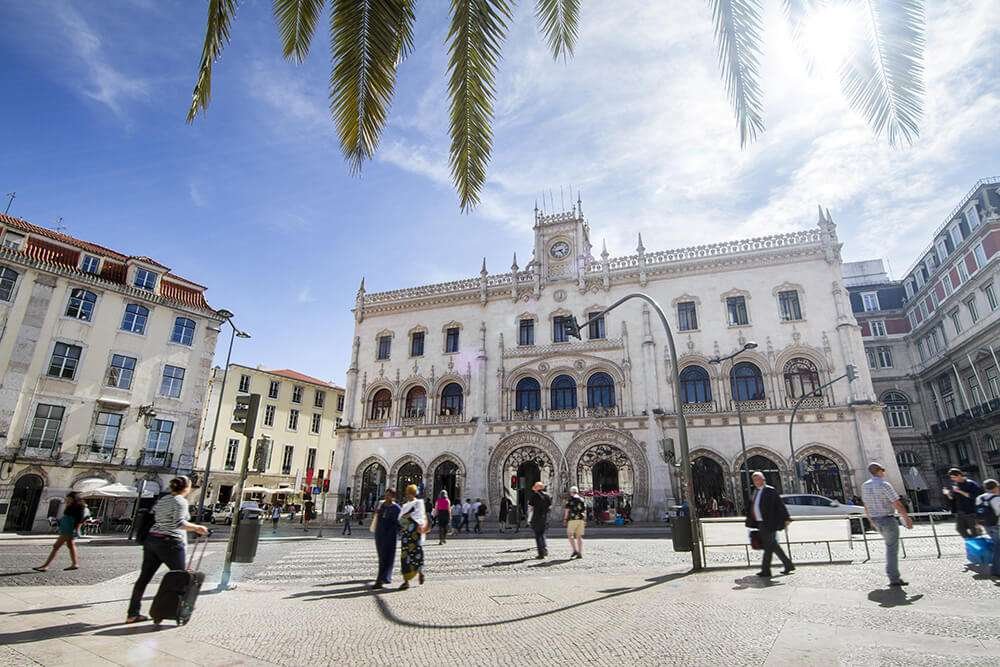
1. Rossio Train Station
Rossio Train Station or Estação do Rossio is the former Central Station of Lisbon. Today, it is the main station for the Lisboa-Sintra suburban railway, connecting Lisbon with the town of Sintra.
At the same time, Rossio Train Station is one of the best examples of Neo-Manueline architecture and therefore one of the attractions of Lisbon. The late 19th-century station is located in the bustling Rossio Square in the heart of the city, making it very easy to reach.
Besides the Sintra Line (Linha de Sintra), the Rossio Train Station also connects with the Green Line (Linha Verde) of the Lisbon Metro. However, you will have to exit the train station and go across the Rossio Square to enter the metro station.
- Read more: The complete guide to Rossio Train Station in Lisbon.
- Get more information about day trips to the fairy-tale town of Sintra in our complete Sintra guide.

2. Cais do Sodré Train Station
Another important train stations for tourists is the Cais do Sodré Train Station that is connected with the surburban Lisbon-Cascais line.
Those who want to get to the beach must use this line, which offers a scenic 40-minute ride along the Atlantic Ocean, along some popular coastal towns around Lisbon, such as Estoril, and ending at the popular resort town Cascais. Since the Cascais line offers connections to the beach, it is a very busy line, especially in summer. We recommend sitting on the left side when departing from Lisbon to enjoy stunning coastal views.
The major hub, dating from 1928, is situated on the waterfront of the Cais do Sodré neighborhood, west of the Baixa neighborhood. Directly under the station is a subway station, outside is a ferry terminal and several bus and tram stops, covering most of Lisbon's popular public transportation options.

3. Gare Do Oriente Station
Opened in 1998 for the Expo '98 world's fair, Gare Do Oriente or Lisbon Oriente Station is one of the main Portuguese intermodal transportation hubs. The busy station provides connections to the northern and western suburbs as well as numerous destinations in the country, including Porto and Faro. It is also linked to a metro station and a bus terminal for regional and long-distance travel departing to Spain and France.
You can catch the biggest train lines here, including Lisbon urban trains, Regional and InterRegional train services, Intercidades and the high-speed Alfa Pendular trains. Located in the Parque das Nações district, Oriente Station is pretty far outside of the city center. Although this is the closest train station to Lisbon Airport, it is actually not very close. Keep in mind that you will have to take a 10-minute metro or taxi ride to get from here to the airport and vice versa.
Designed by Spanish architect Santiago Calatrava in 1995, the railway station impresses with a unique modernist architectural style. The 5-storey complex has a currency exchange, car rental services and underground connections to the Vasco da Gama Shopping Center.
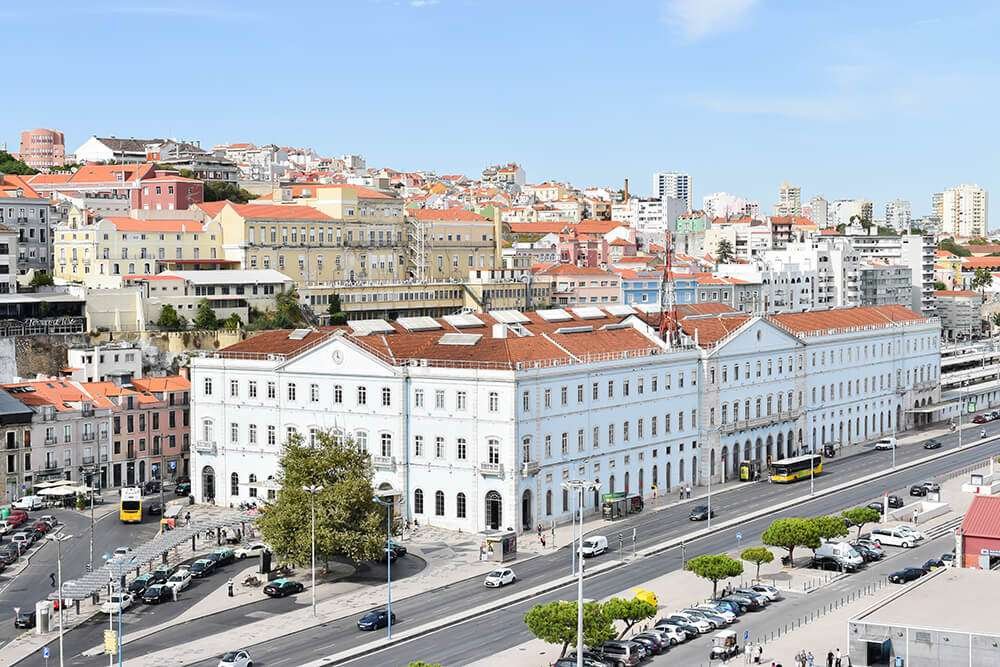
4. Santa Apolónia Station
Conveniently located on the northern bank of the Tagus River in the historic Alfama district, Santa Apolónia Station is one of the most important stations for long-distance travel in the center of the city. Inaugurated in 1895 on the site of a former convent, it is the oldest train station in Portugal.
Tourists planning a trip to the north of the country, to cities like Porto, Coimbra or Braga, will most likely use this railway station. In addition to the national lines, Santa Apolónia is also served by suburban and international trains.
The station, located near the city's cruise terminal, is connected to the metro station of the same name, several bus stops and a taxi stand. Moreover, the railway complex houses a hotel, car rental, shops and a supermarket.
Discover more about the hotel at the train station in our list of Lisbon's best hotels for group stays.
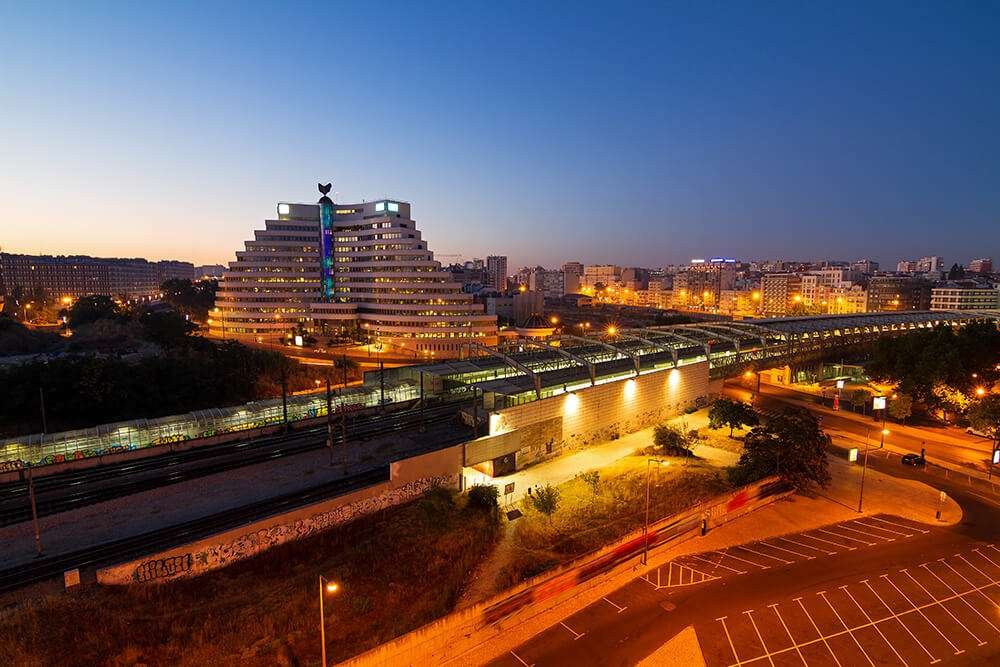
5. Entrecampos Station
Another major hub where a lot of trains cross is Entrecampos Station in the north of Lisbon. Being far from the center, the railway station is not a very convenient choice for tourists.
Entrecampos Station serves some of the key local lines, including the Sintra line and the Fertagus line. From here, you can also catch the high-speed Alfa Pendular trains that go to Porto or Faro.
The building complex offers a shopping area, with several shops, a Lidl supermarket, and cafes. It is linked with the yellow metro line and several bus lines, including the Aerobus line.
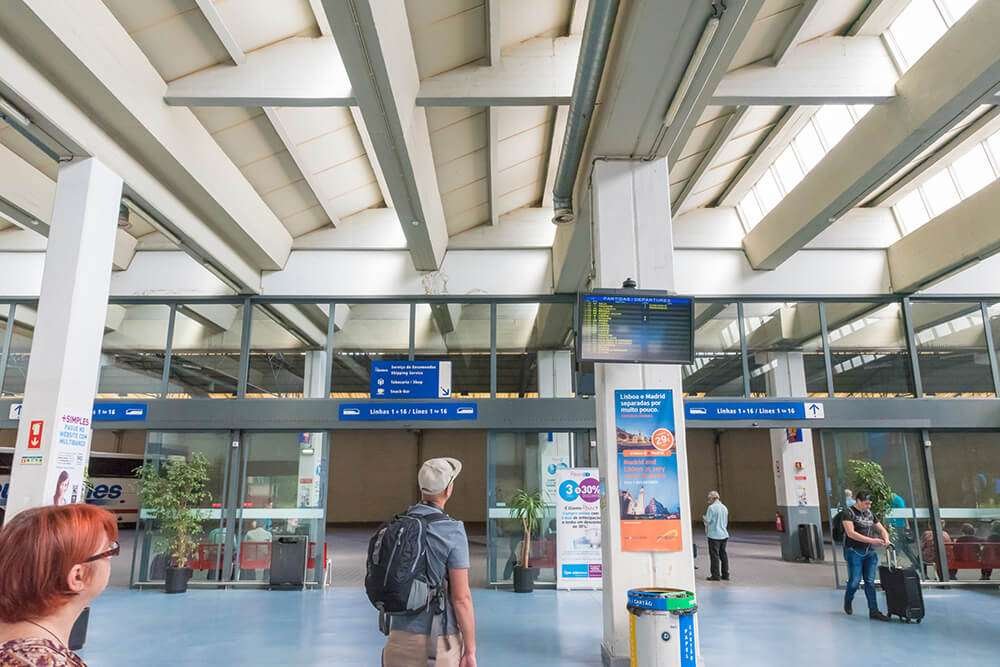
6. Sete Rios Station
Sete Rios is an important transportation hub in the north of Lisbon, close to Lisbon Zoo. While the train station connects the capital with destinations such as Sintra, Setúbal, Albufeira and Faro, it is the Sete Rios bus terminal that sets this hub apart.
This is the departure point of many express long-distance busses that offer connections to larger and smaller cities in Portugal, but also abroad.
Furthermore, Sete Rios station is connected with the Jardim Zoológico station of the blue metro line, making the complex a very busy hub.
Map of Lisbon Train Stations
You are currently viewing a placeholder content from Default. To access the actual content, click the button below. Please note that doing so will share data with third-party providers.
More InformationHow to Buy a Train Ticket in Lisbon?
The most common way to buy train tickets in Lisbon is at the vending machines or at the ticket offices in the train stations.
The ticket vending machines all have English instructions, which makes it easy to purchase tickets even as a tourist.
However, keep in mind that in summer you can expect long queues at the vending machines and ticket offices. Therefore, we recommend that you arrive well in advance of your planned departure.
Book Tickets online
It is not possible to buy tickets online for urban train service, including routes to Sintra and Cascais. However, you can buy online tickets for other destinations such as Porto or Faro.
- You can purchase your online ticket here.
- Tip: Rides to Sintra, Cascais and Estoril are free with the Lisboa Card.
Schedule & Ticket Prices
You can check the train times and current ticket prices on the official homepage of the national rail company Comboios de Portugal.
Are Train Tickets Valid for Metro?
The Lisbon public transportation card Viva Viagem is valid for the metro, bus, funicular, ferry, tram as well as the suburban train (from CP lines). This means that the same ticket you use for the metro you can also use for the trains to Sintra, Estoril and Cascais.
You can preload the amount of the ticket or use a 24-hour ticket, which you can then use in all the above-mentioned forms of public transport.
Transport from the Train Station

Metro & Bus
All train stations have bus connections and/or metro stations; Cais do Sodré Train Station even has ferry connections.
Taxi
In addition, you can find taxis around all train stations that will get you to any part of the city. The current basic fee for a taxi in Lisbon is 3.25€, the kilometer price is 0.47€. Standing and waiting times are charged at 14.80 € per hour. Note that a luggage fee of 1.80€ is charged (all luggage, not per piece).
The night tariff is valid from Monday to Friday from 21:00 to 6:00 in the morning; Saturdays, Sundays and public holiday all day. During these time, the basic fee is 3.90€ and the kilometer price is 0.56€. Standing and waiting time remains at 14.80 € per hour.
Good to know: A popular alternative to taxis are the ridesharing services Uber and Bolt. Since Bolt's prices are considerably cheaper than Uber's, locals prefer this service. In addition, you can use the Bolt app to use the electric scooters in the city and order food.
More Things to Know about Public Transport
For more information about public transportation in Lisbon and how to best use it, we recommend taking a look at our complete Public Transport Guide for Lisbon.

